What are natural flavours and
should you avoid them?
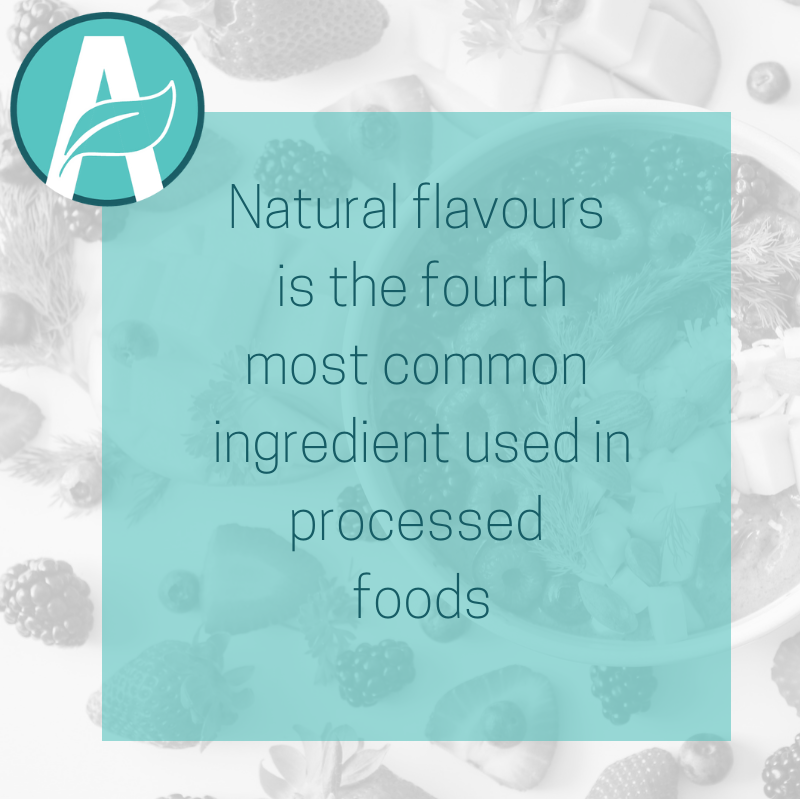
What does natural flavour mean?
Natural flavouring complexes (CAC/GL 66-2008 item 2.2.2) are defined as:
What is in natural flavours?
We actually don’t know! Manufacturers are not required to disclose the ingredients used in ‘natural flavours’. This one ‘natural flavour’ ingredient could actually comprise 5, 10, 20, 50 or 100 different ingredients!We have no way of knowing and the manufacturers are not obliged to tell us.
Don’t you think we have a right to know what we are eating?Manufacturers get a free pass when it comes to flavours. The same rules do not apply! The use of flavours isn’t subject to the same laws as food additives (even though flavours may contain the very same additives!)
Why is this?
The chemical composition is too complex. You can read this to also mean….the list would be too long and it wouldn’t fit on the ingredient label!
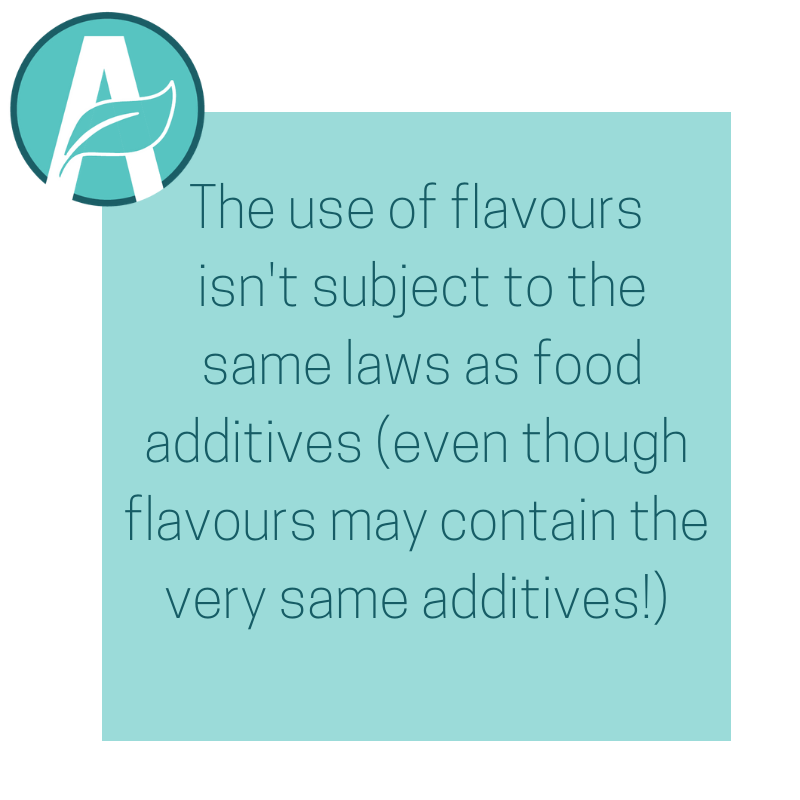
Why are natural flavours added?
1. Processing removes flavour
2. Natural flavours are cheaper than real ingredients
3. Natural flavours sounds healthier
As we mentioned in the beginning, we know that when consumers see the word ‘natural’ they perceive it to be a healthier product.
So what does all that mean? Are natural flavours better for us than artificial flavours?
This is shocking….however, it is very true.
I have asked thousands of questions of manufacturers. Especially about flavours. I have often found that solvents or other chemical ingredients are used to extract the flavour. This results in a natural flavour that is FAR removed from its initial source.
In the words of Gary Reineccious a professor in the department of food science and nutrition at the University of Minnesota, he explains:
“There is little substantive difference in the chemical compositions of natural and artificial flavourings.
They are both made in a laboratory by a trained professional, a ‘flavourist”, who blends appropriate chemicals together in the right proportions.
The flavourist uses ‘natural’ chemicals to make natural flavourings and ‘synthetic’ chemicals to make artificial flavourings.
The flavourist creating an artificial flavouring must use the same chemicals in his formulation as would be used to make a natural flavouring. Otherwise, the flavouring will not have the desired flavour.”
“you have to preserve whats made so the flavour doesn’t change. Oxygen can change the food and it can become bitter, and even poisonous, so adding enzymes that are a catalyst to this change (prevents that)”
In addition to their original flavour source, these mixtures can contain more than 100 different chemicals, including preservatives, solvents and other substances. These are ‘incidental additives’.
Manufacturers are not obligated to share these with you either.
In addition to their original flavour source, these mixtures can contain more than 100 different chemicals, including preservatives, solvents and other substances. These are ‘incidental additives’.
Manufacturers are not obligated to share these with you either.
The short of it is: we really do not know what is included in flavours. Given that so many manufacturers are cagey about the ingredients of their flavours, you can assume that they are trying to hide other ingredients that they don’t want you to know about.
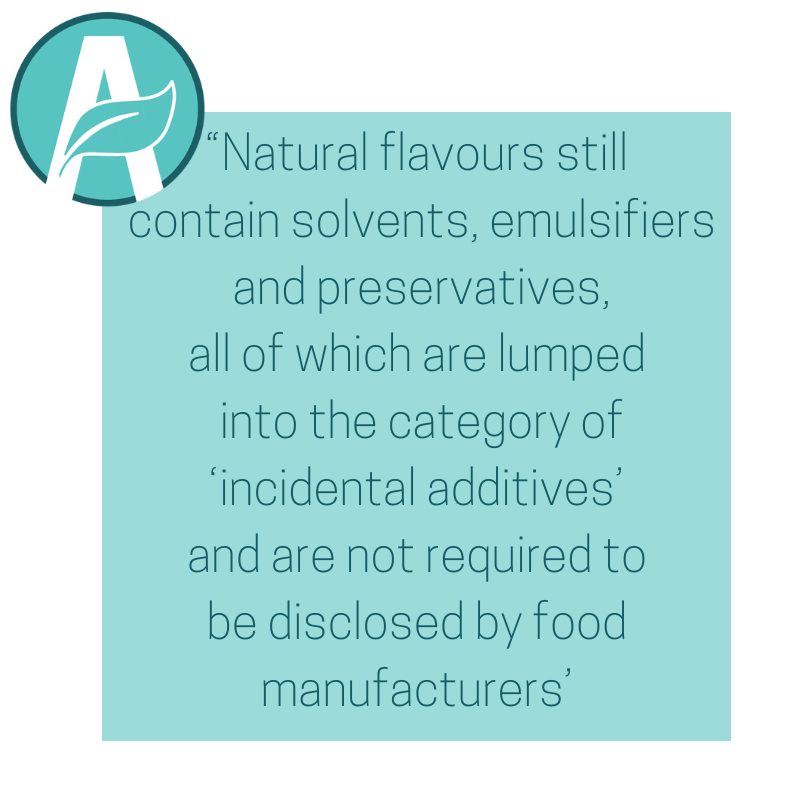
We don’t need natural flavours
Real ingredients don’t need flavours. Real ingredients taste amazing on their own. Combinations of real ingredients can taste even better. When you are using wholefood ingredients you cannot beat the flavour! Go straight to the source for your flavour.
So what should you do now?
To find out more or avoid natural flavours you can:
1) Call or email the manufacturer
“Sorry, we can’t give you any further information, there is intellectual proprietary surrounding that ingredient”
“We are not required to give you that information…”
“Sorry that is our trade secret…”
2) Read ingredient labels
3) Limit your consumption of processed foods
If you are sticking with wholefood products you will minimise your exposure to these flavours. Do the processing in your own kitchen rather than a lab or factory doing it for you.
4) Vote with your dollar

Frankie Bell is the Managing Director of Additive Free Kids, a food coach, mentor and is one of Australia’s leading activists against additives in foods.
Frankie is a mum to 5 boys and has personal experience working through the damaging effects of additives to resolve the multiple health issues and behavioural problems in her own children. It became Frankie’s purpose to help other families achieve the same improvements for their families.
These changes can be overwhelming, especially for time poor parents, Frankie has done all the hard work for families to ensure they have access to additive free food, anytime, anywhere. Additive Free Kids specialises in assisting families to live healthy lives free from additives. See how you can work together with Frankie here.
If you would like to be kept up to date with the latest news, product reviews and giveaways come and and join the Additive Free Kids email list. Receive additive free support direct to your inbox.

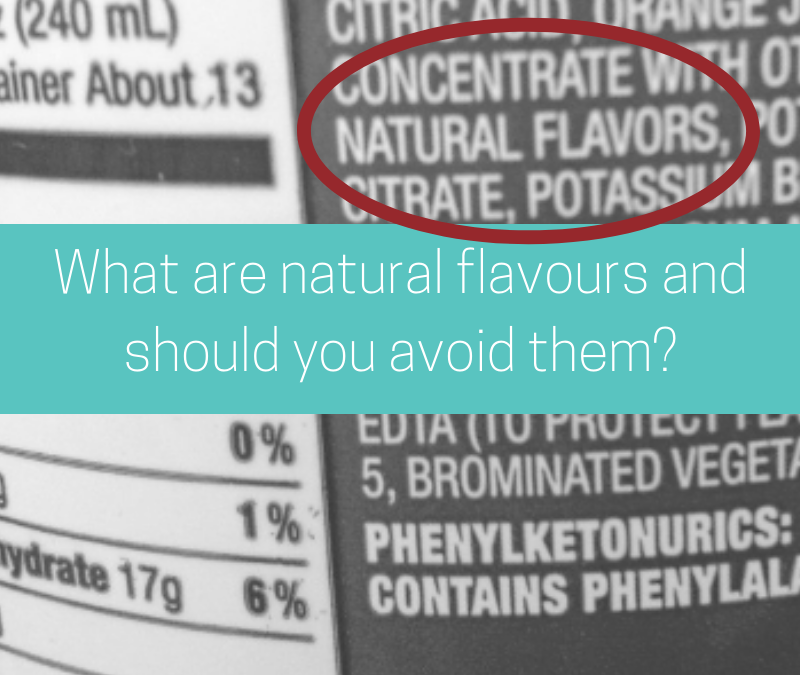
 My passion and mission is to work with families to reduce the overwhelm when going additive free. Moving to additive free living can bring back peace, calm and joy to families. I know it's possible and I've experienced it first hand with my 5 boys.
My passion and mission is to work with families to reduce the overwhelm when going additive free. Moving to additive free living can bring back peace, calm and joy to families. I know it's possible and I've experienced it first hand with my 5 boys.




Thank you – really helpful
You are welcome! Glad it helped you!
THANK YOU sooo much for doing all this research .. I’ve been wondering about this for ages. Very annoying when “certified organic” products from health food stores have “natural flavours” as their 2nd ingredient! Eg: plant based protein powders, stevia liquid and sweet protein snack balls.When asking the “expert”staff they have absolutely no idea.
You are most welcome. It is very annoying…I always get excited and then am often let down. It is a tricky area to understand it all. Glad we were able to assist you. Thanks for taking the time to leave a comment. Frankie x
Thank you so much for this information. I am a single parent who had cancer 20 years ago and doctors told me I was unable to fall pregnant. After being sick for 20 years and having no period, i miraculously had a baby girl at the age of 42. I struggled with food all this time. I was a vegetarian and vegan during this time. I selected foods for their natural ingredients. I was always sick. Then i started eating fresh home cooked meals with meat and no dairy (i worked out I could not eat dairy).
After doing this for one month, i got my first period, the following month i went to the hospital because I was very sick, i was 7.5 weeks pregnant. My body started working again.
My baby girl is now 2.4 years old and we struggle to find anything on the shelves that makes us healthy and happy. I am not at work, so money is scarce, which makes it hard for me to buy good quality meat and vegetables.
We are in Australia (not sure where you are), but i just noticed the other day, that everything bought from the shops that we eat as a snack have natural flavours. For the first time, i decided to google this. And i was mortified, but not surprised.
I came across your information and another lady who wrote similar things about MSG.
I was very sick as a child all my life and i beleived it is because of these natural flavours and MSG. Depression, anxiety, health issues, and many more set backs.
I would like to know what we can do to stop this? Would the tv stations be interested? Or are they just as currupt as the food flavourist industry.. I wouldn’t be surprised if all kids sickness is because of this. I read the other day that baby formula has MSG in it. I could not breast feed so i was forced to use this stuff. My baby was always sick and agitated and it broke my heart.
I want to be able to stand up for our rights.
Do you provide s cook book, or some recipes that i could use? I cannot cook at all, and it freaks me out, but i know I need to start doing it myself.
I always believe in living and leading by example. And believe other change autonomously as I change.
Thanks for listening
Thank you for taking the time to leave a comment. Amazing what the body can do when provided real food ingredients! I am also in Australia (Perth!). It is shocking when you look into flavours deeper. I have found that the best approach is a grass roots approach. Sharing what you have learned with others, sharing your story. I would love to include a blog post on your experience if you are keen. The government are not interested. They believe we are a very small minority. It is also very hard to prove conclusively. All we can do is share our experiences with each other and vote with our dollar. We have our Additive Free Advocates membership that provides advice monthly on which products to buy, look out for, discussion on new products hitting supermarket shelves, Q&A and recipes. This may interest you? Thanks again for taking the time x
Thanks for this exceptionally concise article. My daughter has suffered stomach pain for years. I found out last year she has many allergies, including vanilla. She still has ongoing issues ( not as bad as previous years), but I am sure it is due to companies not labelling correctly. Ie containing vanilla when not stated on the label! Very annoying!
You are welcome, I am glad it was of assistance to you. Our labelling laws are woefully inadequate 🙁
I just called Vitasoy (which is now part of Eden cheese or another multi product company) the exact question and got pretty much all the answers you listed. When I asked whether their Natural Flavour has exclusively vegan sources, she couldn’t respond to that either. When I said I won’t buy it anymore, she hung up the phone.
Even though on the packaging it says it is vegan friendly, there is now way to find out whether this is true.
Sorry to hear about your experience. In my experience manufacturers that act like this have something to hide. Manufacturers that are proud of their product and ingredients will always assist you with your questions as they want transparency. Best thing you can do is vote with your dollar as you mentioned.
I am in Perth too and also rang Vitasoy as I tried their protein plus soymilk and the prebiotic milk which are oil free and taste good, BUT they refused to disclose what the ” natural flavour” means,.in the ingredients list. Deliberately hiding Information is a concern clearly.not in the interest of health.
Definitely! Consumers want transparency. Good on you for trying! Now you have your answer and can vote with your dollar. Thanks for sharing.
We must not forget that it’s not only the additives we think are chemicals, flavours, colours etc.. but the terrible manufactured omega 6 oils that only appeared in the last 100 years, made from mono crops sprayed with glyphosate including canola, soy, sunflower, safflower, rapeseed and rice bran oils. These are extracted using extreme temperatures and pressures, they are highly processed foods, never appearing before the Industrial Age. We have been tricked into thinking ‘vegetable oil’ in ingredients list is just a plant based healthy option, it’s not! We need real fats from butter and meat, coconut oil and single source olive oil, these other so called ‘vegetable oils’ are fake foods and our kids’ deserve real food to grow.
Yes couldn’t agree more!
Agree!
I will go back to making my own bubbly water with real fruit and my soda stream machine. Thank you for the information!
You are welcome
Great – I just read the cobs popcorn butter (natural flavours) , the organic marshmallows that I thought were better (natural flavours) the no added sugar lollipops from the health food store (natural flavours) I’m trying to start Wapf style of eating the family. I already noticed that my 4 yr old daughter has a problem with natural vanilla anatto . The website fedup is really good too.
Great to know about Natural Flavors. I was reading ingredients from Oregano Seasoning, the Same thing Natural Flavor came to know. So I tried to search about this concept. Your Blog really helpful .
Thanks,
Vijay Rasal
Sarvasva Spices and Foods
Pune, Maharashtra, India.
Hi Emma. Can you tell what is the Wapf style of eating. I’m most interested in the article Frankie has written here and all your comments. Frankie, I’m going to join again…I so appreciate your work and realise how much i’ve missed by not maintaining my membership.
Thank you for this insightful breakdown! It’s eye-opening to see how common ingredients like yeast extract can affect sensitive individuals. I’ll definitely look into EveryMite as a healthier alternative. Appreciate the research and recommendations!
What a great article. Well done and thank you.